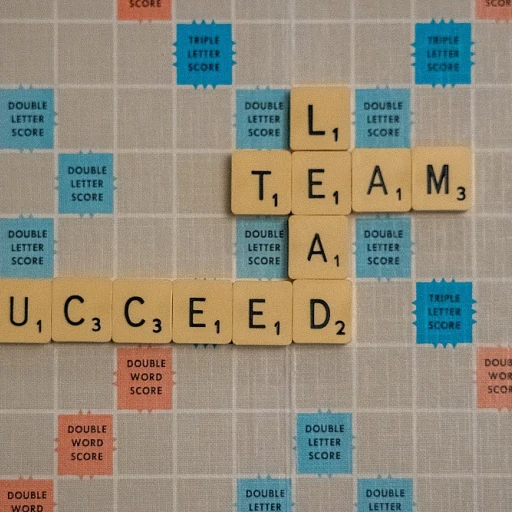
Understanding High Potential Employees
Identifying Key Characteristics
High potential employees, often referred to as "HiPos," exhibit certain distinctive traits that set them apart from their peers. These individuals not only excel in their current jobs but also demonstrate the capacity for leadership and growth within an organization. A key to unlocking their potential is understanding their unique characteristics, which include strong problem-solving skills, adaptability, and exceptional communication abilities.Significance in Business Strategy
Organizations recognize the vital role that high potential employees play in driving business success. These individuals are typically at the forefront of innovation and are pivotal to a company's strategic development. Investing in their development through tailored training programs and leadership initiatives is essential. This approach not only fosters individual growth but also enhances the organization's competitive edge in the market.Early Identification and Development
Identifying high potential employees early in their careers can be a significant advantage for an organization. Early identification allows for the planning and implementation of bespoke development programs that cater to their specific learning and professional growth needs. By doing so, companies can harness their skills effectively, ensuring they are aligned with organizational goals. For organizations seeking to deepen their understanding of promising talent, exploring certification options like psychometry could be insightful. By unlocking the benefits of certification in psychometry, businesses can gain a precise evaluation of a candidate’s potential and align their learning development strategies accordingly.Integrating Learning and Development Solutions
The role of learning and development (L&D) consultants and specialists is to design and implement effective training solutions tailored for high potential employees. This involves crafting instructional design programs that enhance business acumen, leadership capabilities, and specialized skills. Training programs should be dynamic and adaptive, ensuring they keep pace with the trends in organizational development. Through a well-structured approach, led by consulting professionals, organizations can measure the success of their development initiatives. By doing so, they enable HiPos to transition seamlessly into senior roles, thereby supporting long-term business objectives.Challenges Faced by High Potential Employees
Overcoming Obstacles in the Corporate World
High potential employees, often viewed as the future leaders of an organization, face unique challenges that can impede their professional development. As organizations seek to nurture talent through learning and development initiatives, understanding these challenges becomes essential. Firstly, many high potential employees experience pressure to perform beyond their capabilities at an early stage in their careers. This pressure can lead to burnout if not managed properly by their managers or through organizational development programs. It is crucial for learning and development consultants to design training solutions that build resilience and coping strategies in addition to developing technical skills. Another significant challenge is the lack of tailored learning solutions that cater to individual growth needs. Off-the-shelf training programs may not suffice for employees who require specialized development pathways to harness their capabilities. L&D consultants and development managers can overcome this by implementing personalized instructional design and training development approaches. Furthermore, navigating workplace politics and aligning with organizational goals pose another hurdle for high potential talent. These employees must learn to work in complex environments, often requiring advanced leadership development and strategic management skills. Organizations can mitigate these challenges by offering comprehensive support through consulting services specifically designed for high potential employees. Solutions might include clarity consultants specializing in creating bespoke leadership development programs, or offering guidance with the best practices for managing career progression within the business. Finally, measuring the growth of high potential employees is crucial to ensure they are moving in the right direction. Regular evaluations and feedback, typically embedded within training programs, provide visibility to both the employee and their supervisors. This, in turn, facilitates targeted interventions when necessary, promoting sustained growth and job satisfaction. For more in-depth strategies on tackling challenges faced by high potential employees, including enhancing skills with performance improvement plan training, you may find our related content helpful: Enhancing skills with performance improvement plan training.The Strategic Role of a Learning and Development Consultant
The Pivotal Contribution of L&D Consultants in Nurturing Talent
High potential employees are valuable assets for any organization, as they show great promise in driving growth and success. However, these employees often face unique challenges that can hinder their progress. This is where a Learning and Development (L&D) consultant becomes instrumental. With their expertise in crafting tailored learning solutions, L&D consultants play a critical role in unlocking the full potential of these promising individuals.
Unlike traditional training roles, development consultants focus on designing and implementing bespoke programs that align with both organizational goals and individual development needs. This requires a deep understanding of the skills and competencies required for various business functions, allowing them to identify gaps and recommend suitable training solutions. They work closely with development managers and senior leaders to ensure that the training programs are not only effective but also sustainable in the long term.
L&D consulting involves much more than instructional design. It's about fostering a culture of continuous learning and encouraging leadership development. By offering guidance and support to both early and senior employees, consultants can equip them with the necessary skills to take on more advanced roles within the organization. Their insights, combined with best practices in training development, drive the creation of innovative solutions that can adapt to the ever-evolving business landscape.
Moreover, the impact of an L&D consultant goes beyond individual growth; it extends to organizational development as a whole. When high potential employees receive the right support and guidance, they become more engaged, motivated, and ready to contribute to the company's success. The strategic role of a consultant in this process cannot be overstated, as they facilitate not only professional development but also the securing of future leadership within the organization.
Designing Effective Development Programs
Crafting Tailored Learning Experiences
In creating effective development programs, a learning and development consultant must design initiatives that cater to the specific needs of high potential employees. These individuals require specialized training that not only hones their current skills but also prepares them for future leadership roles.Incorporating Best Practices in Program Design
- Needs Assessment: Conduct a thorough analysis to understand the unique challenges and objectives relevant to high potential employees within the organization. This ensures that the training solutions are aligned with both individual and organizational goals.
- Customization: Tailor the programs to suit different levels of experience, from early career professionals to senior managers. This might involve adjusting the complexity of the instructional design and the breadth of topics covered.
- Incorporating Modern Learning Strategies: Utilize an array of learning solutions, such as blended learning, online modules, and workshops, to provide diverse training options that cater to various learning styles.
Engaging Stakeholders in the Development Process
The involvement of key stakeholders, including senior leaders and development specialists, is crucial in the design of impactful training programs. Their insights and expertise can guide the consultant in creating solutions that are not only relevant but also sustainable in the long term. Engaging with an organization's leadership development teams can assure alignment with corporate strategies and goals.Integrating Evaluation and Feedback Mechanisms
Continuous evaluation is integral to the success of any training development initiative. Implementing feedback loops and assessment tools helps in measuring the impact of programs and in making necessary adjustments. Both qualitative and quantitative data should inform future modifications, ensuring that programs remain effective in nurturing high potential employees.Facilitating Management Support
Development consultants must also advocate for L&D investment among the managerial ranks. Communicating the return on investment through demonstrated skill enhancements and business outcomes can bolster support for ongoing or expanded L&D initiatives. Managers who recognize the value in cultivating talent can become champions of the proposed programs, driving their success across the organization.Measuring Success and Growth
Evaluating the Impact of Development Initiatives
The effectiveness of training programs and development solutions is crucial for ensuring high potential employees reach their full potential within an organization. A manager or development consultant must effectively measure success to guarantee the continuous growth of these high potential employees. It's not just about implementing programs; it's about anticipating their impacts and ensuring they lead to measurable organizational improvement.
Key Performance Metrics
A critical aspect of assessing development programs is identifying the right key performance indicators (KPIs). These should go beyond traditional metrics of completion rates or attendance, focusing instead on more tangible outcomes like:
- Improved job performance and productivity
- Enhanced leadership skills
- Higher retention rates of skilled employees
- Achieving specific business objectives
Regular assessment of these KPIs allows L&D consultants and program managers to understand whether the organizational objectives are being met effectively.
Feedback and Continuous Improvement
Feedback is an invaluable tool for measuring growth. Through continuous feedback from employees and managers, consultants can identify gaps and recommend enhancements to training solutions. This approach demands flexibility and adaptability, ensuring programs remain relevant and effective against an ever-changing business landscape.
Long-term Development and Success Measurement
Organizations aiming for sustained success often focus on long-term development. Thus, a proactive role of L&D consulting involves setting benchmarks that meet early career and senior roles, thereby promoting a comprehensive development strategy. They align employee aspirations with organizational goals, fostering a culture of continuous learning.
An effective measurement strategy thus should combine both qualitative and quantitative data, providing a holistic view of employee development over time. Such comprehensive evaluation reinforces an organization's commitment to professional growth, keeping high potential employees engaged and motivated.
Future Trends in Employee Development
Envisioning the Future of Employee Development
As businesses enter a new phase of evolution, the landscape of employee development is poised for significant transformation. Understanding the needs of high potential employees and designing strategic solutions are crucial, but the future holds even more advanced opportunities for growth.With learning and development consultants at the helm, organizations are anticipated to explore technology-driven enhancements that cater to individuals at every stage—from early career individuals to senior professionals. Among the rising trends, the following hold particular prominence:
- Personalized Learning Solutions: Advanced analytics and AI will enable the creation of highly personalized training programs that consider the unique learning styles and professional aspirations of high potential employees. This personalized approach will ensure that learning is both effective and engaging.
- Diverse Development Methods: There will be a shift towards a more diversified module, incorporating virtual reality training, interactive simulations, and gamified learning experiences. This enhances the traditional methods of organizational development and offers dynamic learning pathways.
- Continuous and On-Demand Learning: The "always-on" nature of modern business means that employees will require the ability to access learning resources on-demand, fostering an environment of continuous learning. L&D consultants will play a pivotal role in ensuring these resources are readily accessible.
Moreover, development managers will focus on leadership development tailored to meet the challenges of a fast-paced business environment. They will employ instructional design to create engaging and relevant content, enhancing retention and skills application.
The strategic role of a learning and development consultant will be critical in guiding organizations towards effective best practices and measurable growth. As L&D services evolve, businesses will need to remain agile, open to new ideas, and willing to integrate innovative solutions to harness the potential of their workforce fully.












